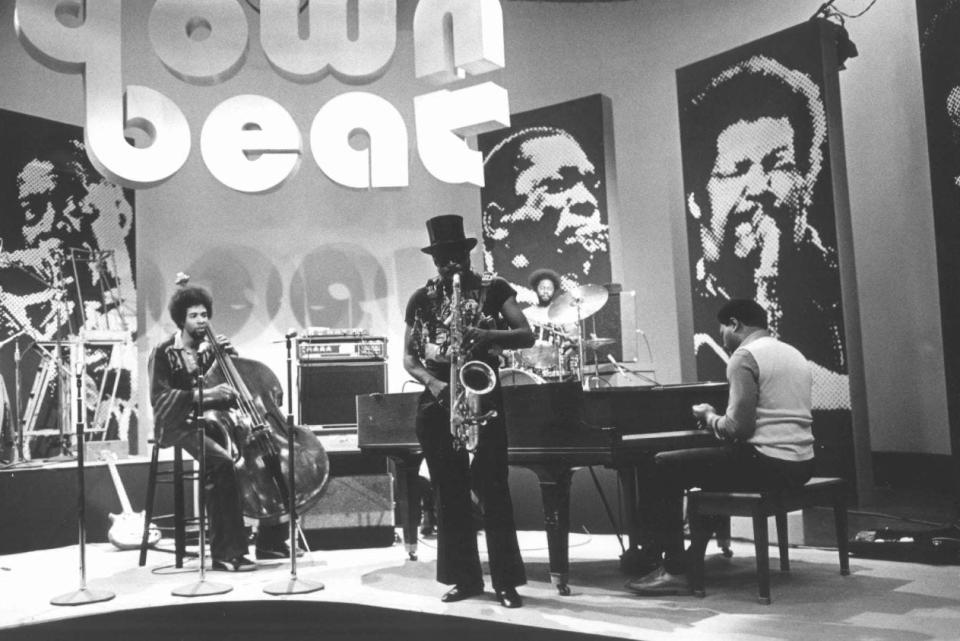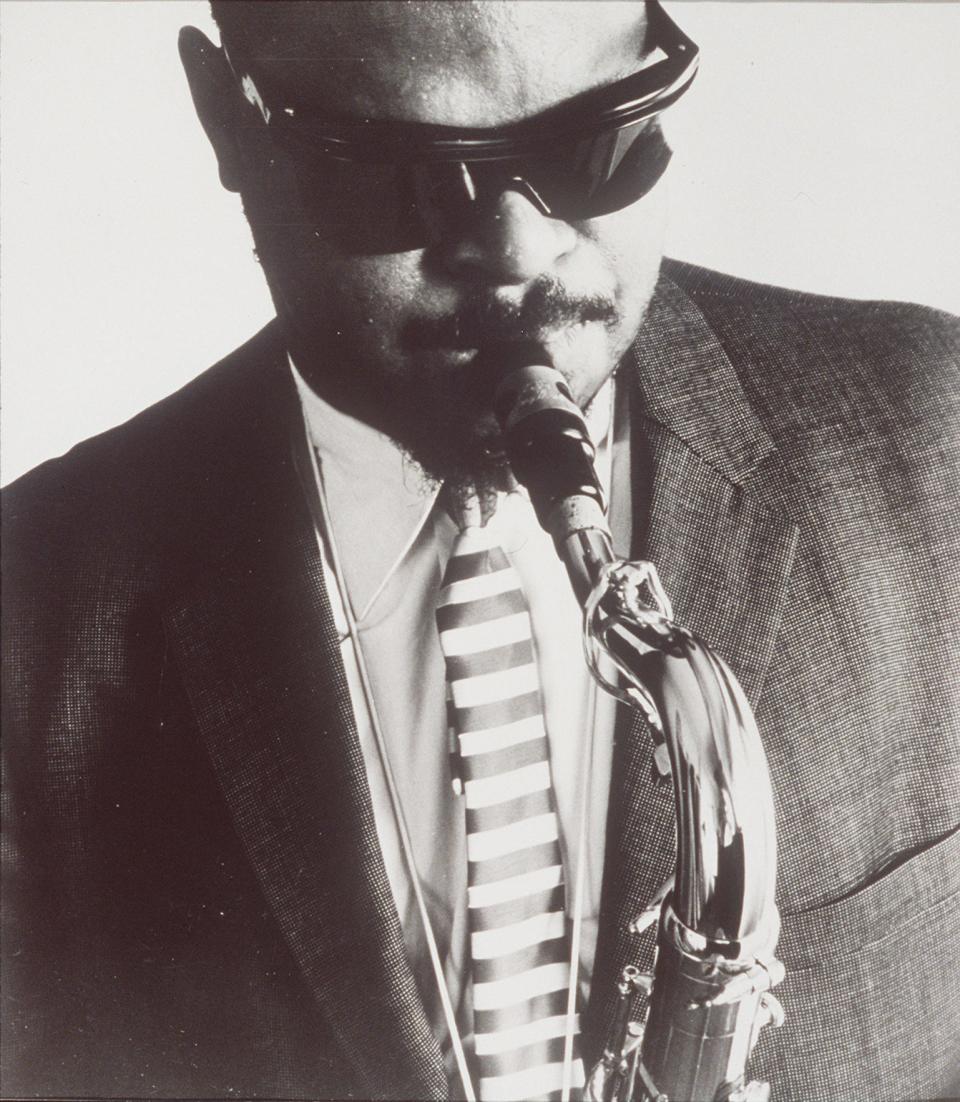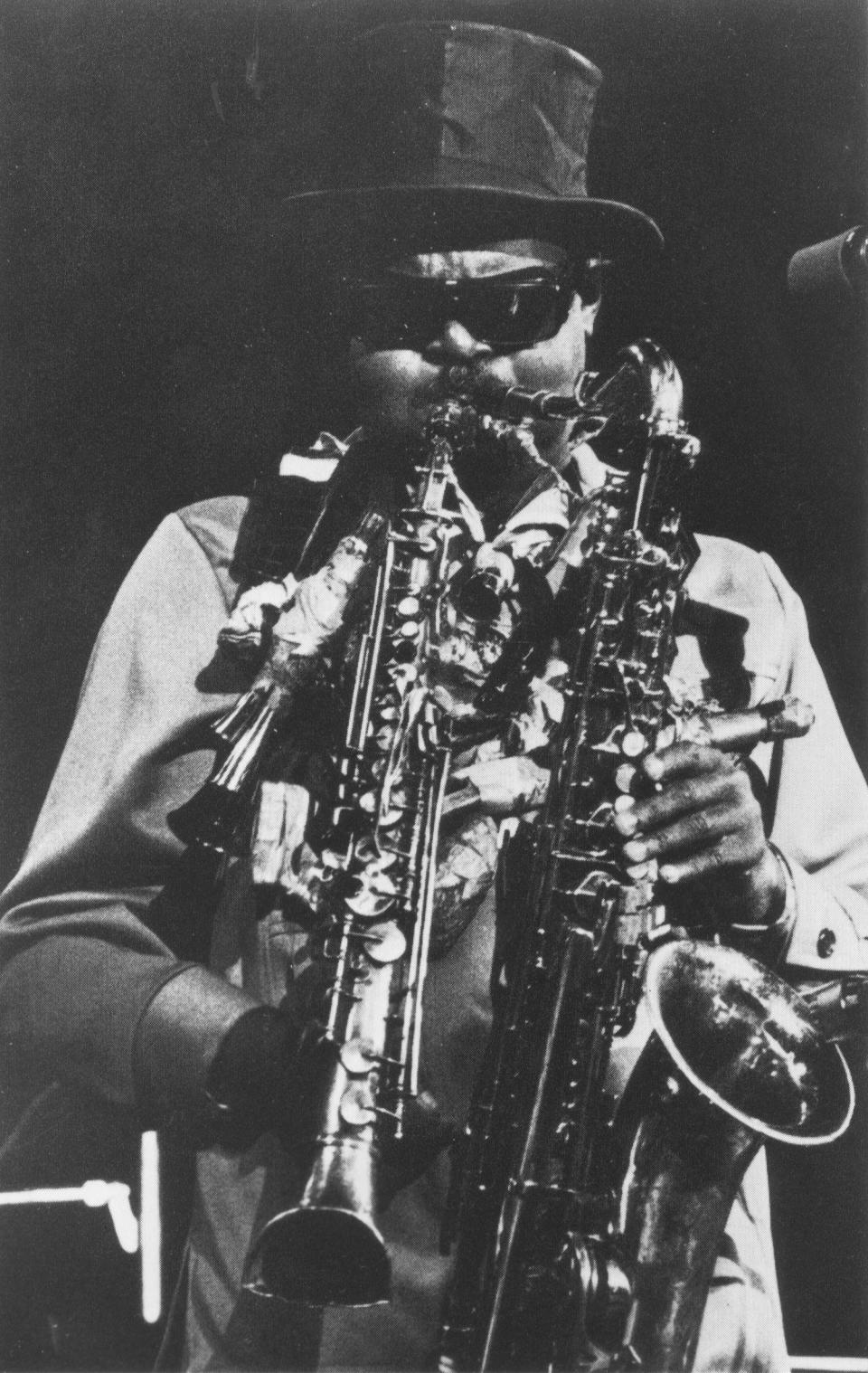Statue of unsung Columbus legend should replace Christopher Columbus at city hall | Opinion
- Oops!Something went wrong.Please try again later.
- Oops!Something went wrong.Please try again later.
Chris Davey is a communications consultant in Columbus.
Nearly half a century ago, amid the pulsating rhythms and sultry summer air of the famed Newport Jazz Festival, one man stepped onto the stage, heralded by a legion of luminaries.
He couldn’t see the crowd, but they were there to hear him, and he could feel the love.
Columbus native Rahsaan Roland Kirk commanded the stage that night with indomitable will, undeterred by the stroke that had nearly ended his life just months earlier. The event was a benefit concert aimed at raising $20,000 for his recuperation, attracting such legends as Count Basie, Sarah Vaughan, and Dizzy Gillespie.
Columbus Mileposts | Aug. 7, 1935: Blind jazz artist Kirk known for innovation

The New York Times the next day captured the essence of the evening: "The high point of the session came, appropriately, with the entrance of Kirk. Surrounded by a galaxy of jazz stars, Mr. Kirk, who used to play two and three instruments at once, showed that even with one hand, he is still more than a match for most saxophonists. Producing a tone as strong, full, and positive as before his illness, his playing still had the driving power and mercurial imagination that have always been his hallmark."
More: The Forgotten Colossus: Take a Tour of Rahsaan Roland Kirk’s Life and Legacy in Columbus
More: Rich heritage of music, musicians in Columbus strikes a chord
Today it's time for the city of Columbus to commemorate this hometown hero, a man who battled both personal and societal challenges with unflinching resolve.
What better figure to stand in place of the erstwhile Christopher Columbus statue, which was removed in the throes of the George Floyd awakening in 2020?
A statue of Kirk would honor a man whose courage, talent, and activism left an indelible mark on music and on our city.
Born and raised in Columbus’ Flytown, despite losing his sight in childhood, he mastered multiple instruments and toured the world, making jazz (or as he called it, “Black Classical Music”) with the likes of Jimi Hendrix, Thelonious Monk, John Coltrane, and Charles Mingus.
Kirk was an extraordinarily prolific and diverse artist, releasing 28 original albums between 1956 and 1977. He was known for his unmatched range of styles, instruments, and subgenres. Rahsaan played the tenor saxophone, harmonizing it with the stritch and manzello saxophones simultaneously, while also interspersing various flutes and other instruments in his songs.

His mastery of circular breathing allowed him to achieve unique phrasing and sustain notes beyond what most musicians could do. After his stroke, he customized his horns and flutes to play with one hand, recorded one more album, and continued touring.
More: How highways destroyed Black neighborhoods in the '60s, as told by elders who were there
More: The Forgotten Colossus: Rahsaan Roland Kirk is Little-Known, Even in His Hometown
In the late 1960s, Kirk took his activism to a national stage, leading a movement to disrupt live television broadcasts to protest racial discrimination in the music and entertainment industry.
His battle against what he termed "Plantation America" was controversial at the time even among some artists and activists.
But it worked at least insofar as it got the attention of Ed Sullivan, who invited Kirk and his band the Vibration Society to perform on Sullivan’s eponymous popular variety show.
Kirk declared in opening the performance, “True Black music will be heard tonight.”
Sullivan and his producers wanted him to perform his melodic and accessible cover of Stevie Wonder’s “My Cherie Amour,” but in his typical insistence on artistic autonomy, Kirk challenged the audience with a raucous rendition of Mingus’s “Haitian Fight Song,” a celebration of freedom triumphing over oppression.
Local musician and sound technician, Nick Schuld, has initiated a campaign on Change.org.
The petition calls for the replacement of the Christopher Columbus statue, with a tribute to the city's homegrown jazz hero. It has nearly 1,200 signatures.
The petition can be found at: https://www.change.org/p/columbus-city-council-replace-christopher-columbus-statue-with-rahsaan-roland-kirk-columbus-ohio.
Mike Brown, the chief of staff to Columbus City Council President Shannon Hardin, recently told Columbus Monthly magazine that the idea of a Kirk statue resonates with council members. However, he said they are awaiting the Public Art Commission's proposal. You can write the commission at art@columbus.gov.

A statue honoring Kirk would not only pay tribute to his extraordinary life and accomplishments but also serve as a symbol of hope, resilience, and the relentless pursuit of equality. And it would be a redemption and a reconciliation.
Kirk left the city of his birth as a teenager feeling artistically misunderstood, and he only returned sporadically.
He told a biographer, “I don’t feel at home in my hometown.”
Let’s bring Rahsaan home.
This will be an important step toward acknowledging our city's diverse history and the critical role that figures like Kirk have played in shaping it. Columbus deserves a monument that is reflective of our past, relevant to our present, and inspiring for our future, and that monument should be Rahsaan Roland Kirk.
Chris Davey is a communications consultant in Columbus.
This article originally appeared on The Columbus Dispatch: Why Ohio jazz legend should replace Columbus statue at city hall

